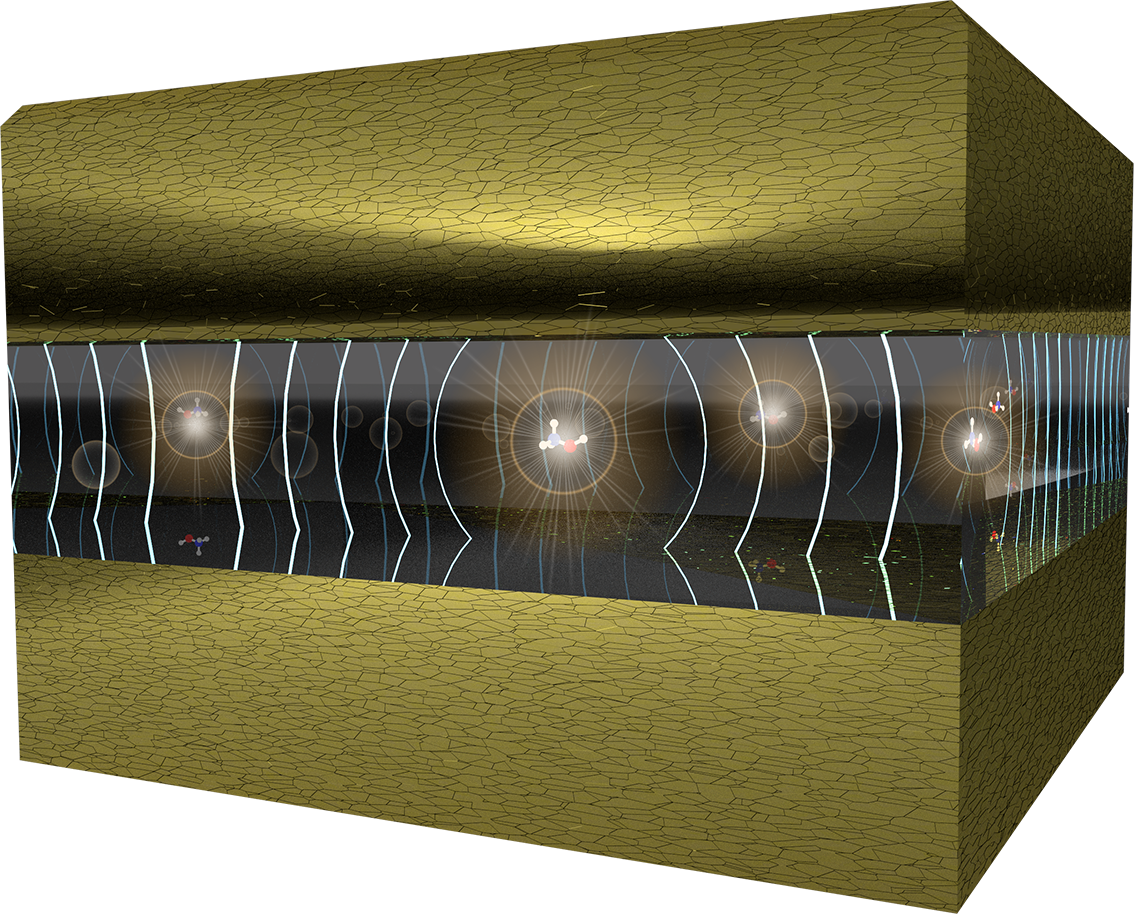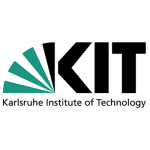HEIMaT
High Enhancement and Interface of Molecular Transition (Nanoantennas for higher-multipole light-mattercoupling)
Could one force molecules to emit light of exotic properties? Could light be manipulated to interact with matter with a strength increased thousandfold? How to exploit magnetic fields to elongate molecular lifetime by a hundred thousand times? What might tiny metallic particles, invisible to the naked eye, have to do with it? The HEIMaT project may provide answers to these and many other intriguing questions.

ABOUT HEIMaT
 The HEIMaT project belongs to the HOMING programme by the Foundation for Polish Science, co-financed by the European Union’s Smart Growth Operational Programme. Its goal is a detailed investigation of the potential of plasmonic nanoantennas to control interactions of light and molecules. In particular, we are interested in exploitation of multiple co-existing interaction channels that can reinforce or suppress each other.
The HEIMaT project belongs to the HOMING programme by the Foundation for Polish Science, co-financed by the European Union’s Smart Growth Operational Programme. Its goal is a detailed investigation of the potential of plasmonic nanoantennas to control interactions of light and molecules. In particular, we are interested in exploitation of multiple co-existing interaction channels that can reinforce or suppress each other.
MORE INFORMATION »
Plasmonic nanoantennas are metallic particles of sizes a thousand times smaller than the diameter of a human hair. The project is focused on their remarkable ability to concentrate light into nanoscopic regions of space. If a molecule is positioned in such a hot spot created by a nanoantenna, its interaction to light is radically enhanced. Most of research in this direction concentrates on interactions based on a single, usually dominating “electric dipolar” interaction channel, related to energy exchange between the electric field associated with light, and the molecular charge distribution. The exceptionally strong light confinement opens, however, additional interaction channels. One of them is through energy exchange between the molecule and magnetic field. Another corresponds to energy related to the interaction of different parts of the molecule with fields whose strength varies in space. Hence, the molecule may absorb or emit light through several parallel mechanisms, that can enhance or suppress each other, depending on the configuration of light fields. This configuration can be controlled with nanoantennas.
HEIMaT aims at a comprehensive analysis of the influence of nanoantenna geometry on the electric and magnetic components of light. In consequence, we might acquire access to control of molecules at unprecedented scale. Particular interaction channels could be selectively enhanced, to render their observation available without special spectroscopic techniques that are nowadays required. We could exploit such molecules as bright sources of light of unique properties that follow from the extraordinary interaction channels. For instance, such light would carry large angular momenta, which finds direct applications in optical tweezers that rotate molecules, for modern techniques of information encoding in single light quanta for cryptography, for ultrasensitive molecular spectroscopy.
As mentioned before, multiple co-existing interaction channels may enhance or suppress each other in a process called interference. The possibility of suppression seems to be especially interesting, since it promises coherence times longer by orders of magnitude. This would be a key to applications in quantum computing, information storage, signal processing: anywhere a short coherence time constitutes a limitation.
Could one precisely engineer a nanoantenna to capitalize on multiple interaction channels? Could these channels suppress each other and enhance in consequence the molecular lifetime by a hundred thousand times? Such action would be of crucial importance for modern quantum information technologies, where a finite lifetime constitutes an important limitation. Exploration of this and similar possibilities is one our goals within HEIMaT. In our research we combine methods of quantum chemistry for characterization of molecules, plasmonics - to describe optical properties of nanoantennas, and quantum optics, to explore their interactions. The project involves experts in each of these fields: to learn more see the TEAM section.
WHO WORKS ON HEIMaT?
The HEIMaT project is executed at the University of Nicolaus Copernicus in Toruń, in active collaboration with partners at the Karlsruhe Institute of Technology in Germany. The former is an institution recognized internationally for its major contributions to the development of atomic and molecular spectroscopy and quantum optics. The latter is a host for two theoretical groups of world-class experts in the fields of quantum chemistry and nanophotonics.



The project is funded by the Foundation for Polish Science and the European Regional Development Fund (Project HEIMaT No. Homing/2016-1/8)